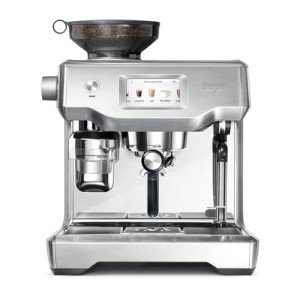20 Fun Informational Facts About Commercial Espresso Machines
The Rise of Home Espresso Machines: A Comprehensive Guide
As coffee enthusiasts continue to look for fresh and flavorful brews in the house, the appeal of home espresso machines has actually surged over the last few years. No longer simply the domain of cafes and cafe, these machines empower individuals to craft barista-quality espresso beverages from the convenience of their kitchen areas. This post will check out the various kinds of home espresso machines, their features, and considerations for picking the best one. Furthermore, it will provide a choice of FAQs to help potential purchasers make notified choices.
Types of Home Espresso Machines
Home espresso machines can be classified into a number of classifications based on their mechanisms and user-friendliness. Each type has its special features, pros, and cons.
Type
Description
Pros
Cons
Manual Espresso Machines
Requires the user to by hand control the developing process, involving methods like pulling a lever to produce pressure.
- Complete control over brewing procedure
- Compact style
- Requires ability and practice
- Time-consuming
Semi-Automatic Machines
Machine automates water flow and pressure, but the user still manages the dosing and duration of the brewing procedure.
- Balance of automation and control
- Versatile
- Learning curve for refining techniques
Fully Automatic Machines
Automates the entire developing procedure, from grinding to brewing, typically with programmable settings for customized beverages.
- Extremely easy to use
- Quick and hassle-free
- Less control over the developing process
- Higher cost point
Pill or Pod Machines
Utilizes pre-packaged espresso capsules or pods to produce coffee quickly and easily.
- Extremely simple to use
- Minimal cleanup
- Limited taste variety
- More costly per cup than ground coffee
Super-Automatic Machines
Combines functions of totally automatic machines with integrated grinders, enabling users to brew whole bean espresso and milk-based beverages with one touch.
- All-in-one convenience
- Ideal for milk-based beverages
- Often the most costly
- Can be bulky
Functions to Consider
When choosing a home espresso machine, possible purchasers need to think about the following features to guarantee they select a machine that meets their requirements:
Grinder Type:
- Built-in grinders can offer fresher premises but might need more upkeep.
- Separate grinders allow for more personalization of grind size.
Pressure:
- Look for machines that produce a minimum of nine bars of pressure, which is ideal for developing espresso.
Water Temperature Control:
- Machines with adjustable temperature level settings permit better extraction of taste from beans.
Milk Frothing Options:
- Consider whether you desire a manual steam wand for frothing or an automatic milk frother for benefit.
Alleviate of Cleaning:
- Machines with detachable parts and self-cleaning functions significantly minimize clean-up time.
Size and Design:
- Ensure the machine fits easily in your kitchen and lines up with your aesthetic choices.
Budget:
- Set a budget before beginning your search, as costs can vary significantly from affordable designs to high-end machines.
Benefits of Home Espresso Machines
Owning a home espresso machine uses various advantages:
- Cost-Effective: Over time, developing espresso at home can conserve coffee lovers cash compared to regular coffee shop sees.
- Personalization: Users can experiment with various beans, grind sizes, and brewing techniques to discover their ideal cup.
- Convenience: The capability to brew espresso at any time removes the need to head out to a coffee shop, specifically advantageous during late nights or early mornings.
- Quality Control: With a home machine, individuals have complete control over the quality of active ingredients and brewing procedures.
Downsides of Home Espresso Machines
However, t here are some drawbacks to think about:
- Initial Investment: High-quality espresso machines can be costly, requiring a considerable upfront investment.
- Knowing Curve: Mastering the art of espresso brewing can require time and practice, which may be intimidating for newbies.
- Upkeep: Like any device, espresso machines need regular cleaning and maintenance to make sure ideal efficiency.
Frequently asked questions
1. What is the best kind of home espresso machine for beginners?
Answer: For newbies, a semi-automatic machine is often recommended as it offers a balance in between control and automation, enabling you to discover the fundamentals without frustrating intricacy.
2. How much should I spend on a home espresso machine?
Response: Entry-level machines can begin around ₤ 100 to ₤ 300, while higher-end models can range from ₤ 500 to over ₤ 2000. It's important to set a budget based upon your anticipated usage and wanted functions.
3. Do I need a different grinder?
Answer: While some espresso machines include built-in mills, buying a separate grinder permits greater customization and makes sure better quality grounds.
4. How frequently should I clean my espresso machine?
Response: Cleaning frequency can vary by machine type, however it's generally recommended to clean the machine after each use and perform deep cleanings weekly or regular monthly, depending on use.
5. Can I make milk-based drinks with any espresso machine?
Response: Not all machines feature milk frothing capabilities. If you enjoy drinks like lattes or coffees, look for a machine with a steam wand or automatic frother.
Home espresso machines are changing the way coffee aficionados enjoy their cherished brews. With numerous types and advanced functions readily available in the market, there is something for everyone. Whether it's the delight of creating distinct recipes or simply appreciating the ideal shot of espresso, purchasing a home espresso machine can improve both the coffee-drinking experience and the lifestyle for coffee enthusiasts everywhere. Similar to any investment, it is important to weigh the benefits versus the potential drawbacks and select a machine that seamlessly fits both your lifestyle and choices.
